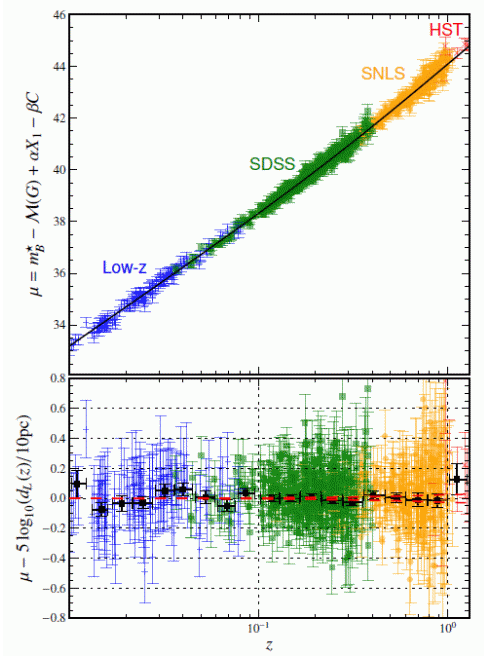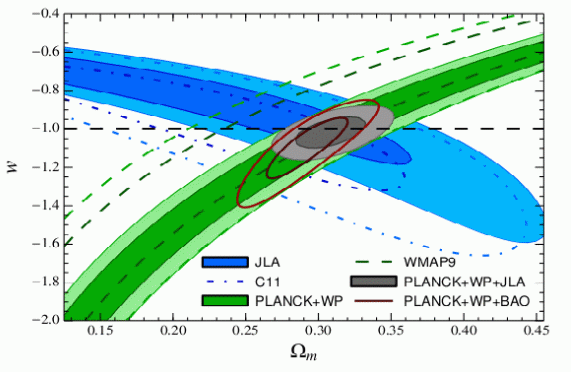


No description
For this type of survey, it is important to be able to measure a weak flux that tends towards the near infrared for the more distant supernovae. It requires large telescopes, with a large field of view, and a follow-up (the measurement of the curves of light), which can be done thanks to a "Rolling Search" tracking Sky regularly a few days apart. The greater density of objects with large redshift makes it possible to obtain a sufficient statistic with observations of fields of the sky more reduced. The flagship projects of recent years to measure the supernovæ whose redshifts range from 0.2 to 1.0 were SNLS and SDSS.
The CPPM has been an active member of SNLS since its inception in 2004. SNLS published in 2010 the 3-year data analysis that represents the best distance accuracy for highs <1.0 redshifts. It was found that the dominant error is related to the systematic effects of the calibration procedure. This calibration developed for SNLS is however the best obtained to date for this type of instrument and this result points towards the need to work still on these methods to improve the future results.
At the same time, major efforts are being made by independent groups to compile the supernovae observations from different surveys in order to identify and reduce systematic uncertainties. It is within this framework that a joint analysis of the supernova data of SDSS-II and 3-year-old SNLS has been carried out, resulting in the JLA compilation (joint lightcurve analysis), the most accurate measure to date Of the Hubble diagram, which includes 740 SN 1a.
In current projects, the new Dark Energy Survey (DES) is designed to measure more than 3000 distant supernovae in the years to come. A project to measure distant supernovae is also being started with the Subaru telescope, to improve the statistics and the accuracy of the objects at higher Redshift.
By 2020, there will be lots of supernovæ with large redshift and low redshift coming from the precursor projects to LSST which will have brought about an improvement of the current state. The LSST project, thanks to its large field of view and extreme cadence, will bring together with the same instrument the ability to measure a large number of objects, both low and high redshift, a calibration that should gain an order of magnitude and A systematic check to obtain the best details on the Hubble diagram of the supernovae.

No description
By Dominique Fouchez